In 1992 the Teenage Mutant Ninja Turtles were at the height of their popularity and like many young boys of my generation, I was obsessed! To the point where my vast toy collection wasn’t enough. I wanted a real turtle, and shockingly enough my mother obliged me. He was a red-eared slider (Trachemys scripta elegans), a sub-species of the pond slider native to the mid-western United States, around the Mississippi River and its tributaries. Canonically, the Ninja Turtles themselves are also red-eared sliders. Red-eared sliders get their name from the red slash behind each eye. Coincidently, my favorite Ninja Turtle sported a red bandana, so I named my turtle after him, Raphael. And I’m happy to report that 33 years later, I still have Raphael. Unfortunately, turtles aren’t exciting enough pets to hold the long-term attention of a child that’s more interested in cartoons than herpetology, and to most parents they’re a “disposable” pet.
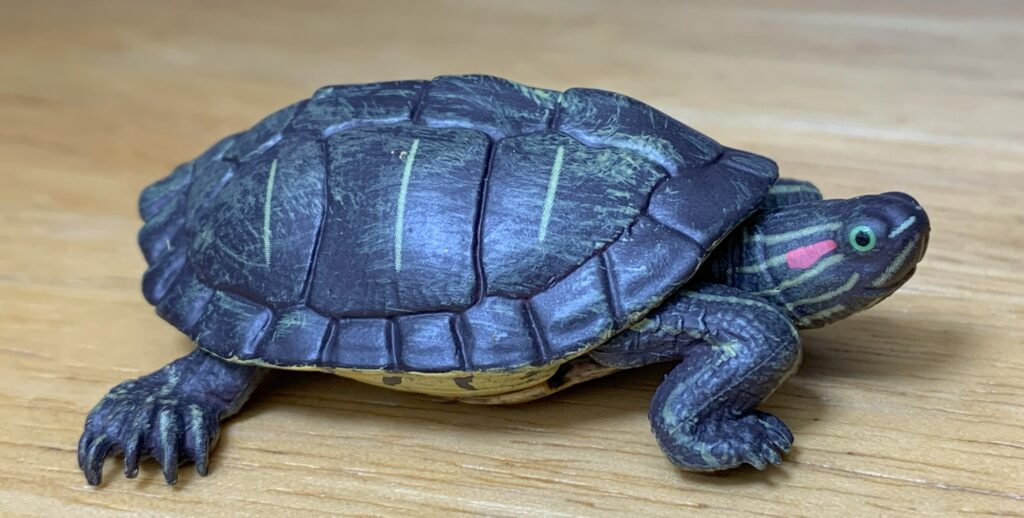
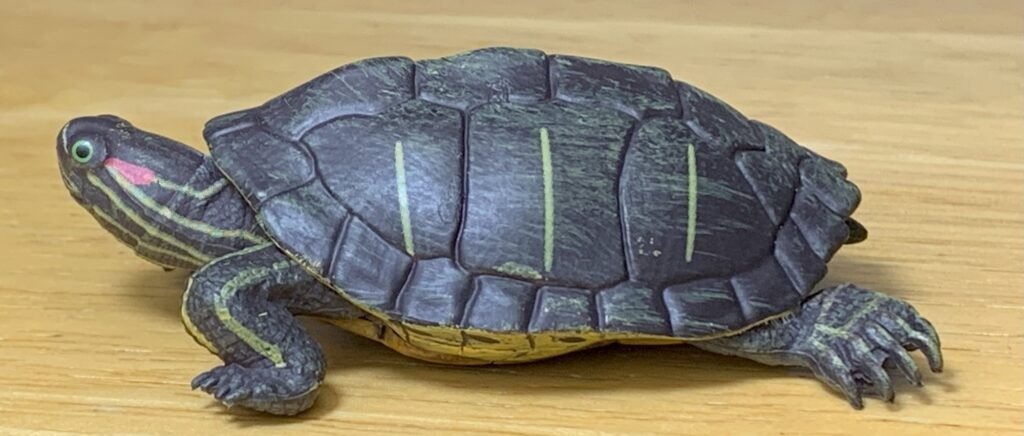
Due to pet releases (and escapes) the red-eared slider is now considered one of the world’s most invasive species and they can be found well outside their native range in North America as well as in Australia, Europe, Africa, and Asia, and various other locations. What makes red-eared sliders attractive for farming for the pet trade also helps them compete against native turtles. They’re hardy, reach maturity at an early age, and produce large clutches. Today we’re looking at the only red-eared slider suitable for most homes, a plastic one, the Papo “Florida tortoise” new for 2024.
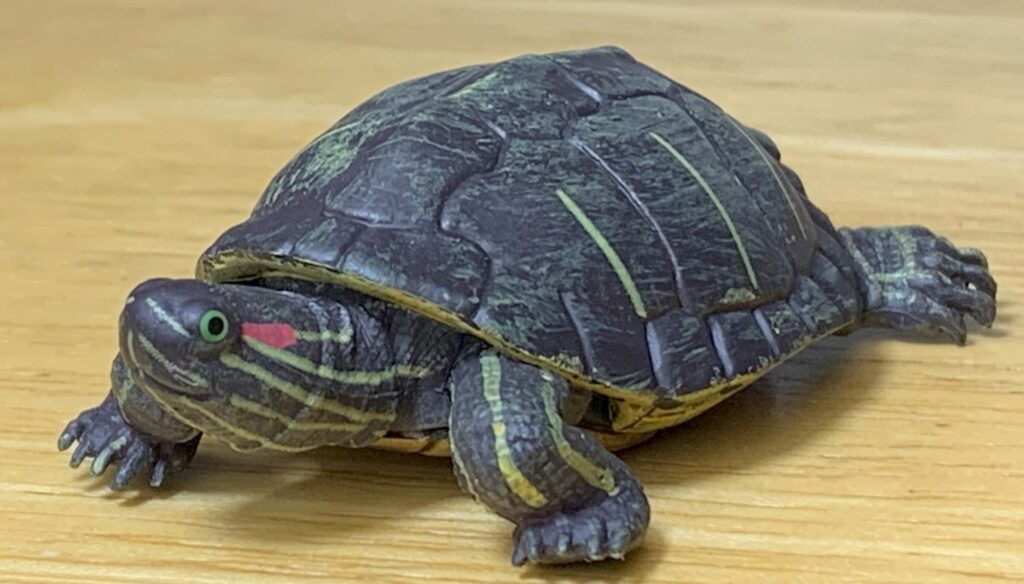
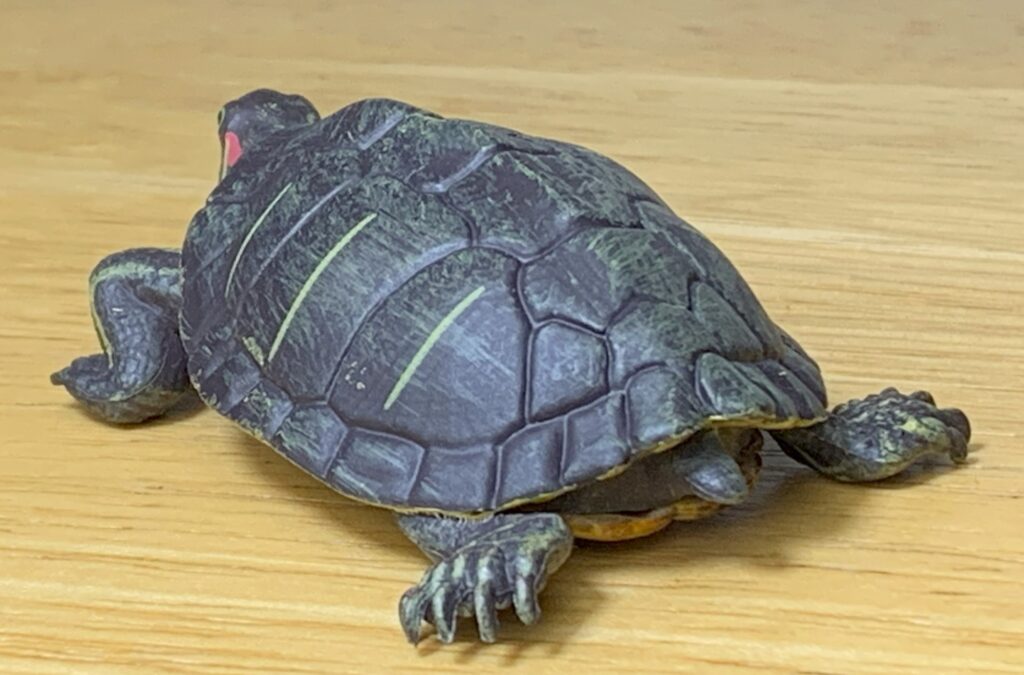
Papo probably markets this figure as a Florida tortoise because they’re a French company and in France there aren’t separate words for turtles and tortoises, they are all “tortue”. But red-eared sliders are only native to a portion of western Florida. Florida does have a species of tortoise though, the gopher tortoise.
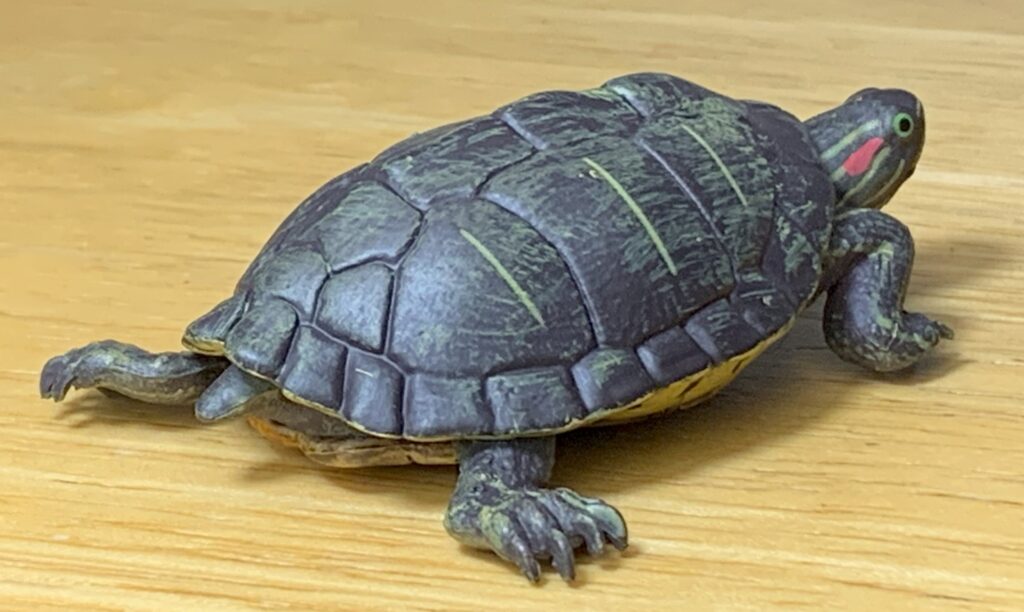
Male red-eared sliders can reach a carapace length of about 8” (20 cm) while females can get as large as 12” (30 cm). Thankfully for me, Raphael turned out to be a male. The smaller size makes housing males easier. Male red-eared sliders have long claws on their forelimbs used for courtship displays and a proportionally longer tail. Since the Papo turtle has short claws and a short tail, it represents a female. The figure has a carapace length of 2” (5.08 cm) which puts it at 1/6 in scale when scaled down from a length of 12”.
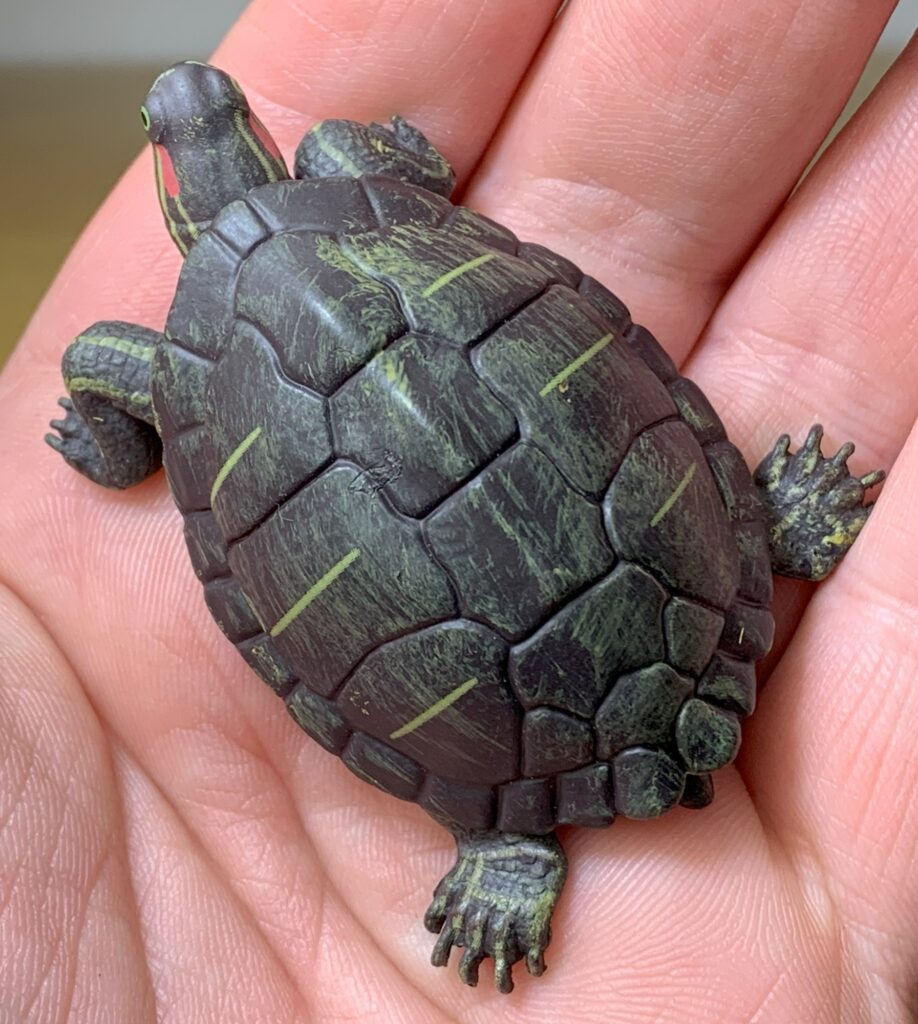
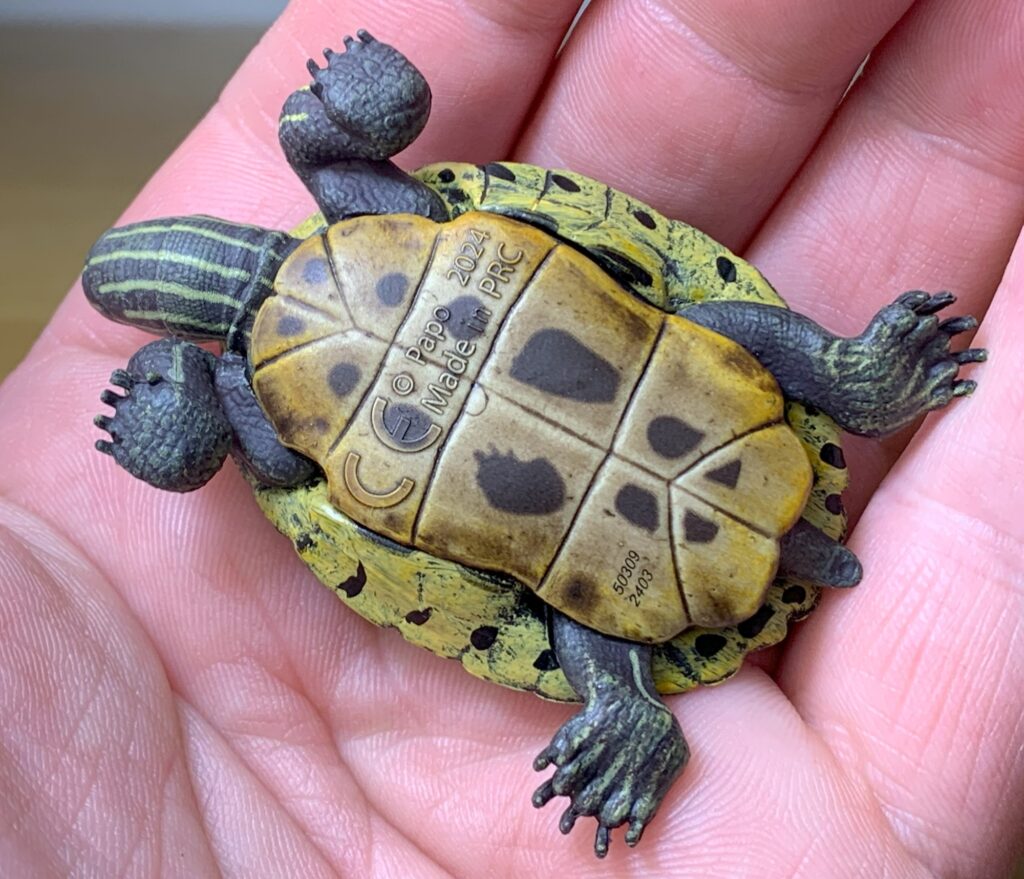
The carapace of the figure is slightly dome shaped and has a weak keel running down the midline of the back, and a slightly serrated posterior margin. All the scutes making up the carapace are accounted for, although the last vertebral scute and adjacent pleural scutes appear a bit small and crammed together. The plastron looks even better, with the correct number of scutes also being the right size and shape.
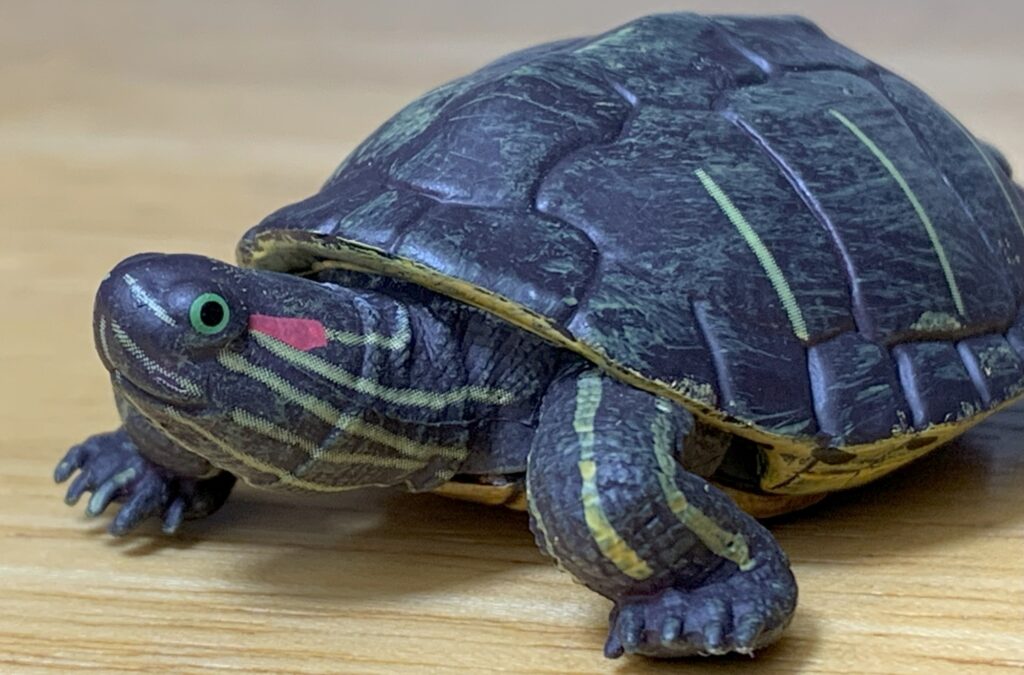
The head is wrinkled along the throat with loose skin towards the back of the neck and where it attaches to the shell. The mouth is drawn up in a cute little grin along the corners, like what you would see on an actual red-eared slider. Each limb possesses five distinct digits with curved claws that are remarkably pointed. The hindfeet are broad and paddle-like.
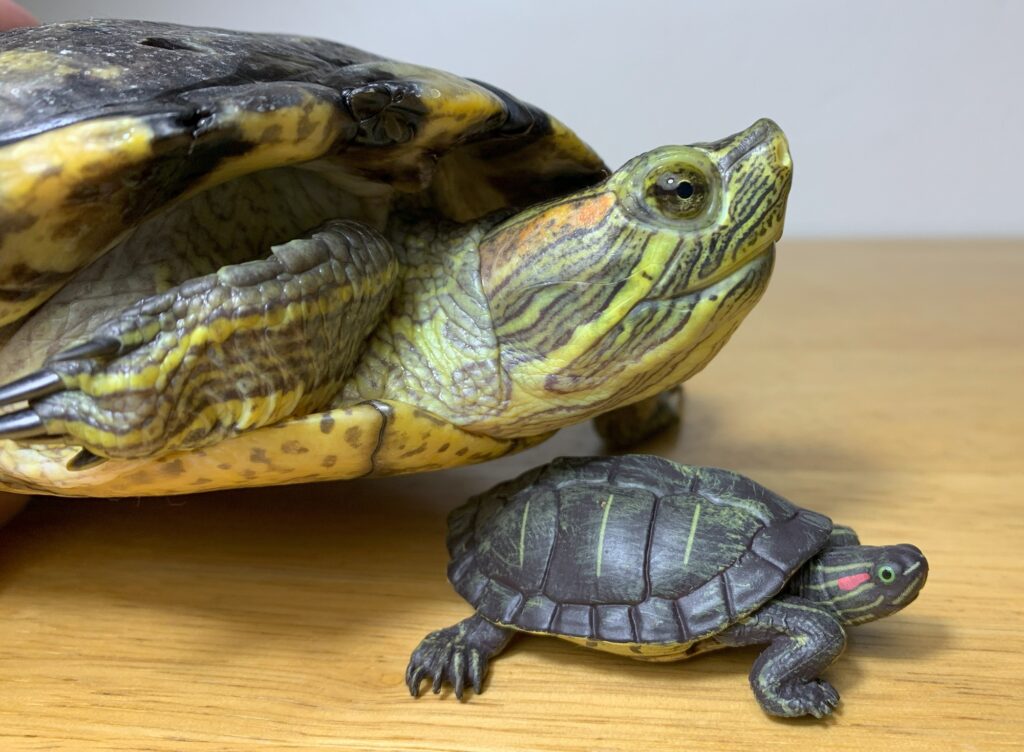
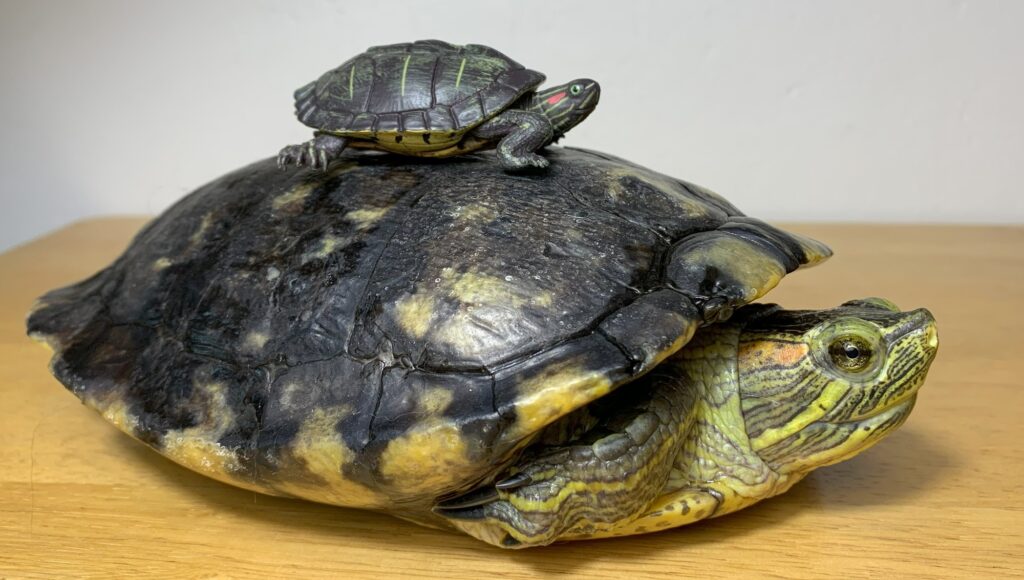
Although it’s about the size of a hatchling red-eared slider this figure clearly represents an adult. Newly hatched sliders have a vibrant green carapace, and this coloration darkens with age to brown or olive green. Male sliders can turn completely black with advanced age. Raphael was already an adult when I got him, and brown with striped patterning, but is now almost completely black with barely any discernable pattern. Most red-eared slider figures possess the hatchling coloration.
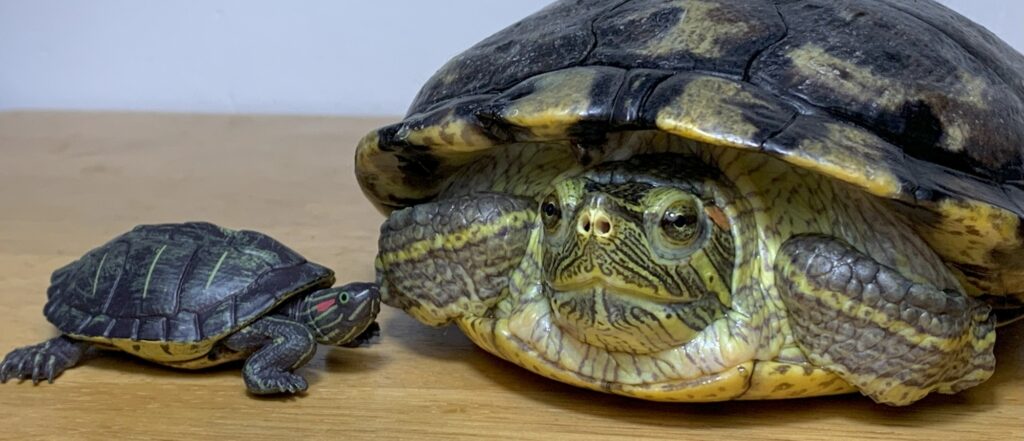
Papo’s turtle is mottled dark green with a yellow stripe on each pleural scute. The head and limbs are also dark green with yellow stripes and the head has its postorbital red markings. The underside is dirty yellow with a black spot on each scute. The eyes are green with black pupils.
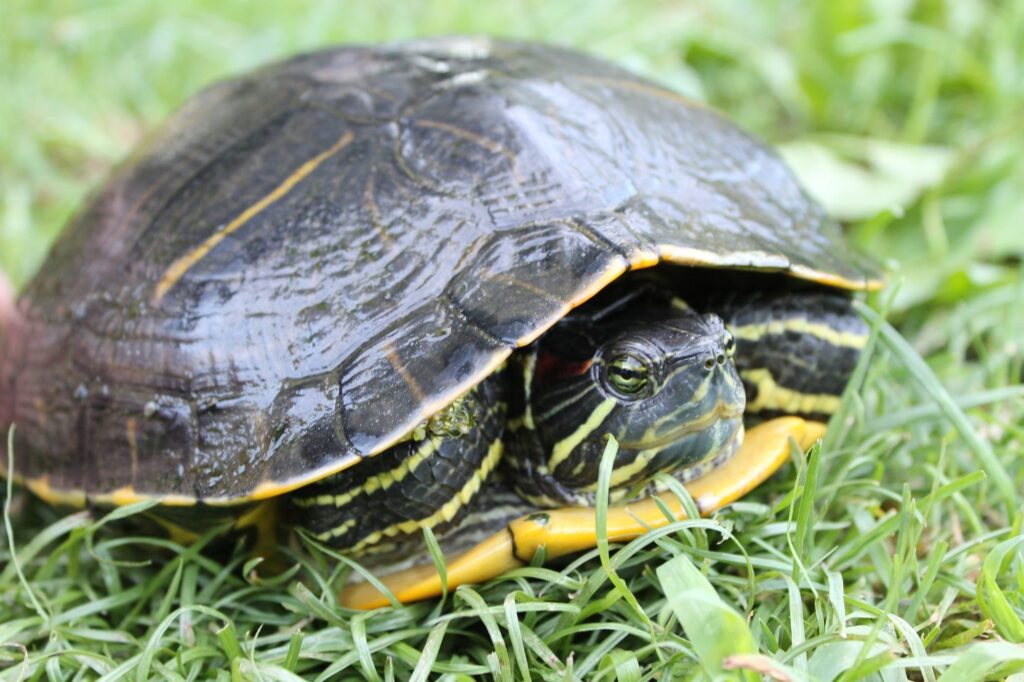
As you can probably tell, I was eager to acquire and review a figure representing the same species as my lifelong companion, but the Papo red-eared slider is notable in several respects. Most red-eared slider toys represent hatchlings, and this one is a small-scale figure that represents an adult animal. Along with Safari’s 1/2 scale slider (painted like a hatchling) it is also the only red-eared slider figure currently in production. Consider this figure highly recommended by someone that has been looking at one of these turtles for the last 33 years!
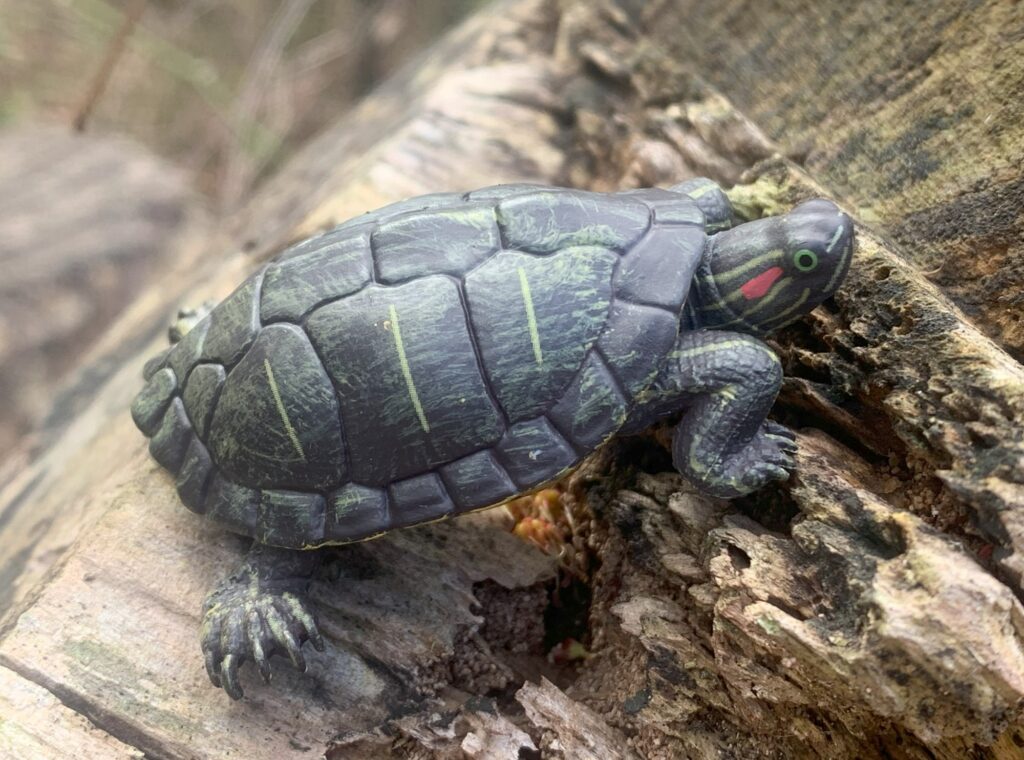
Disclaimer: links to Ebay and Amazon on the AnimalToyBlog are affiliate links, so we make a small commission if you use them. Thanks for supporting us!




As a kid, I owned a hatchling. It was in 1989, before the Ninja Turtle fever reached France, and before the red-eared slider was banned in this country.
I went with a friend to the local pet store and bought one on an impulse. We told our parents that we won it at the funfair, because we didn’t want them to take it back to the shop.
Of course, they didn’t buy our story. 😂
My pal’s parents didn’t want it at home, but mine were cooler and I was allowed to keep it.
Sadly, it died one year later because I didn’t take care enough of it. 😭 I don’t even know if it was a he or a she.
Now, I own Safari’s IC, which is almost real-sized.
I think Papp did a better job with this one (notably the paint job).
But I’m already satisfied with my jumbo figure, so I won’t buy this turtle.
The babies are definitely harder to care for than the adults. If mine was a hatchling when I got him I’m not sure he would have survived either, I didn’t know much about turtle care when I was 8 years old.
I really enjoyed reading this review. It’s so cool that you still have your pet. You must’ve taken really great care of it! The figure is pretty nice too
Thanks! I’m glad that you enjoyed the review. Honestly, I wasn’t a great turtle caretaker in my youth but my husbandry has greatly improved over the years.
aww i loved reading this review! it’s nice to see your childhood turtle still by your side and this figure is a great representation of the species
Thanks! It was definitely a special review for me to write.
By the way, it’s true that there are no separate words for “turtle” and “tortoise” in French (as in many other European languages – English may be the only exception, in Europe at least).
Huge sea turtles, smaller pond terrapins and desert tortoises are all “tortues” for us.
On the other hand, an owl will be a “hibou” if it’s an eared-owl (Asio and related), otherwise, it will be a “chouette” (Pronounced “shwet” – Strix and related). The barn owls, which belong to another family of strigiformes (the Tytonidae) will also be labelled as “chouettes”.
“Hibou” is masculine whereas “chouette” is feminine. Since grammatical genders influence the way we see things in life, a grumpy old man will often be called a “vieil hibou” and a grumpy old woman will be a “vieille chouette”.
Similarly, in French, a small species of seagull will be a “mouette” (feminine like “chouette”) and a large one (a herring gull for example) will be a “goéland” (masculine).
Weird, isn’t it ?
Interesting! Thanks for the lesson! In the Unites States people like to argue about whether something is a turtle or a tortoise and correct each other on it. The reality is that tortoises ARE turtles, so there’s nothing incorrect about calling a tortoise a turtle. I like to point out that in some languages (like French) there aren’t even words that distinguish the two. But those words for different gulls and owls are new to me.
I quite like this little fellow. Wish companies would make more turtle toys. Everyone’s got a giant tortoise, but why no giant softshells? Why no alligator snappers? Papo did make one years ago, but then they retired it. Give us a new one!
I agree. Safari made a alligator snapper years ago for the IC line but it has been retired. I’m trying to hunt one down cheap, it’s far better than Papo’s. Safari also made a IC softshell but it is also hard to find these days. I thought I had bought one off eBay but it turned out to be a bootleg. There is a softshell in the new Everglades TOOB though.